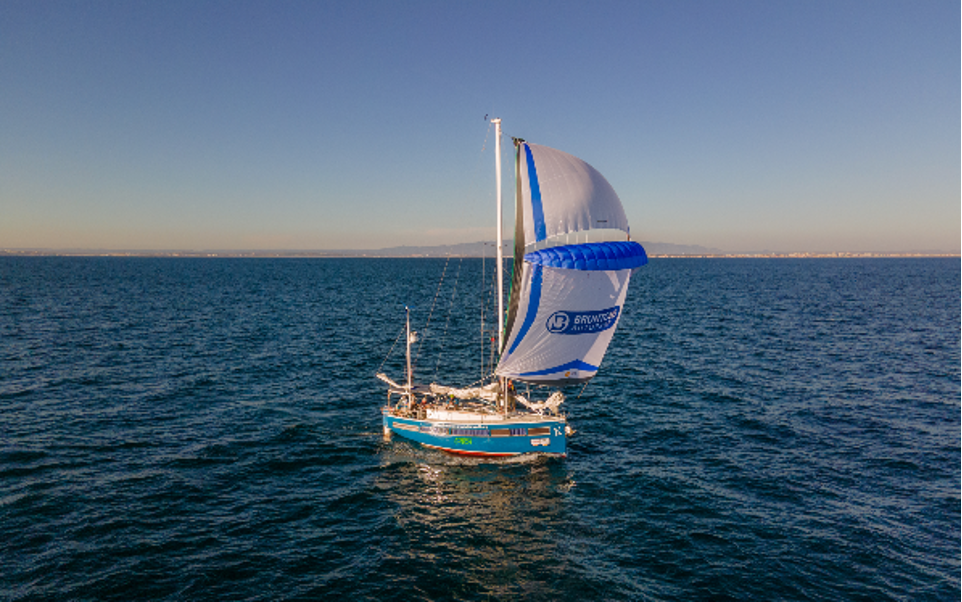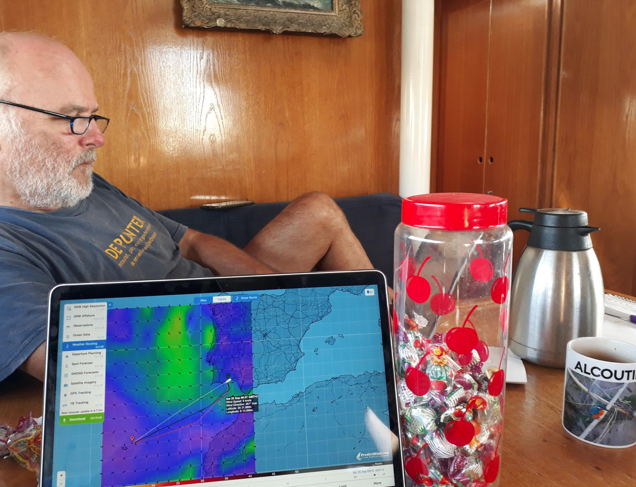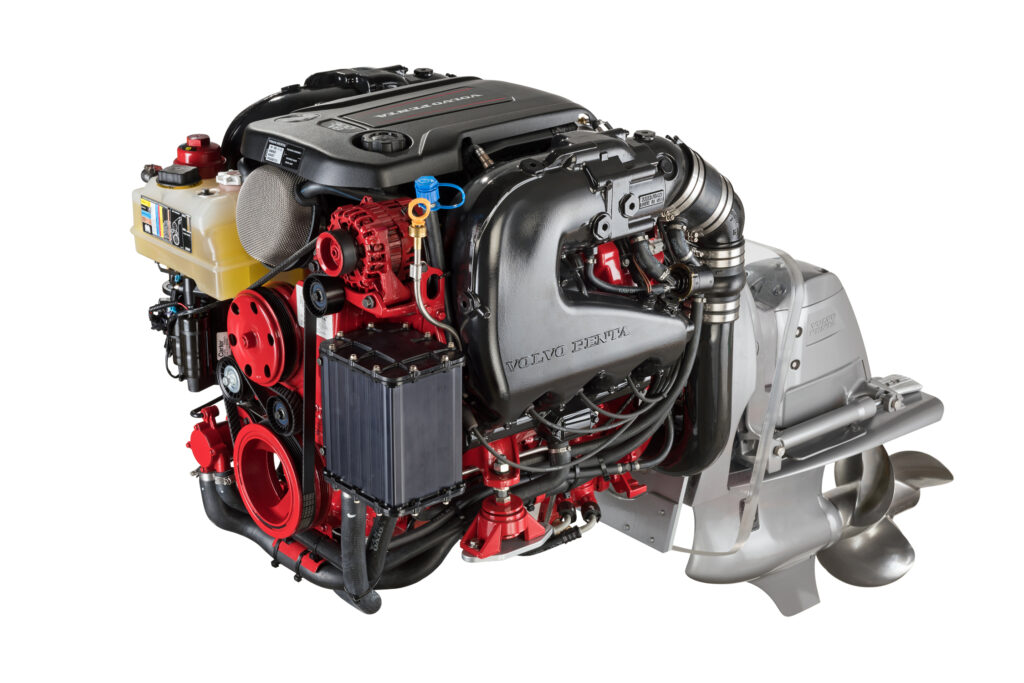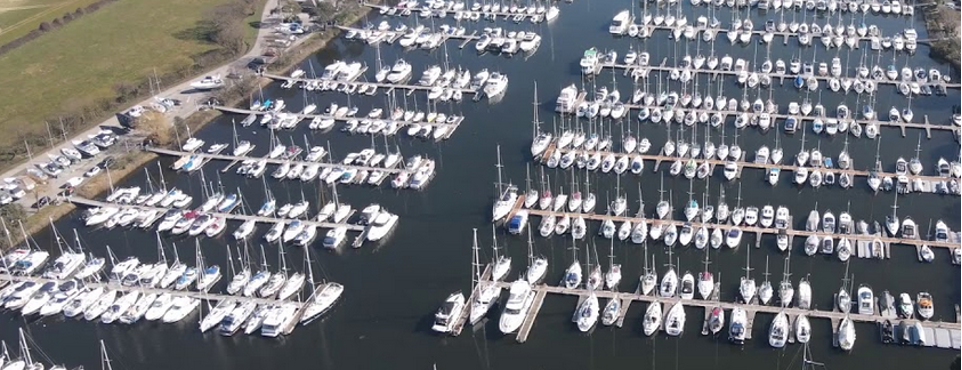On the last use-only-what-you-need-cooking blog, we got various reactions, and all good. So, are you ready for the big one? Sailing. With sails, not on the engine. If you only use the engine when you need it, the pay off is great in the experience on comfort, safety, sailing pleasure and experiencing nature.
The key to most of it is the planning, so about good weather forecasts.

Planning according to the weather forecast
30 years ago, a weather forecast could be: “During the day the wind will be South west to North West 2 to 3 Beaufort, in open area up to 4 or 5 and in showers 6 Beaufort” So basically, you didn’t know more than that the wind could be Westerly, between 2 to 6 Beaufort. So you hardly planned for the weather, you just decided on the day itself.
Nowadays we have great weather forecasts, in with wind angles per degree, and speeds in knots or m/s. All this with great accuracy over 5 days ahead. We take profit of that bij planning our voyage. When we make trip for a weekend, we decide about our routing depending the forecast. Never more the wind against you!
But still we meet sailors making appointments first and afterwards checking the weather. Once we heard a story of people sailing an 8 days round trip. They constantly motored, 5 knots for 600 miles, beating against waves and winds – and actually could set sails for a mere 100 miles. Terrible. Their appointments happened to be made contrary with the weather. This is not only a waste of fossil fuel, money and CO2, but also bad for your health, your precise leisure time, and the extra CO2 is bad for your childrens future.

With the use of a weather forecast instead of the diesel engine, they would have sailed the other way around would have led to a joyful trip with only 100 miles motorsailing and 700 miles of sheer sailing pleasure.
So do use the engines only when you need it. It gives sailing pleasure in stead of banging your boat into waves and wind.
A modern yacht
The Ya is a modern yacht. She is not heavy, and you can feel her sailing. This makes the sailing fun. Especially with light winds we enjoy sailing in all its subtleties. And then we are surprised to see so many modern yachts going on the engine., even with 5 knots of speed. That’s a pity, they miss the best part! Perhaps they like the motoring? Well, then buy a motor yacht.
And in heavy weather, if you use the engine instead of sails, you miss the safe part. Because a sailing yacht is designed and built for sailing, and not for heavy engine use.
So, on our modern yacht, we use the engine only when we need it. And we get more sailing pleasure out of that.
“When necessary”, and reliability
Many skippers tell me they want the engine to be there ‘when necessary’ and often they mean: to resist a storm. From the shore point of view this sounds reasonable. But sorry, in the four occasions I was in a storm, the diesel engine let us down three times. Once it was the sludge from the tank, stirred into the diesel by the pounding waves, blocking the fuel filters. Once it was sea water splashed through the exhaust pipe into the engine and stopped the engine, and once it was some wet or broken electronics on the engine. On these occasions, it was the reefed sails that helped us out and brought us to safety.
Only the fourth time, it was in Force 9 on an old-fashioned sailing lugger, we sometimes ran the old engine for comfort purposes. But on board was a dedicated engineer for the maintenance. But, also in this case, we relied on the sails to get us home safely.

Realize that you need to know an awful lot of a diesel engine before you can oversee what can be the cause of a defect. And, even of more value: how you can prevent defects. If you are a yacht skipper and you are not a yacht engineer yourself, please do not count on the engine, especially not the complex, computerized engines. Focus on your sails and your sailing for reliability. And, with a wink: also don’t use more sails than you need.
So, we sail, also in heavy weather. Perhaps we will use our electric engines as auxiliary in a storm. To give a little bit of extra propulsion and make our leeway smaller. The chance that electric engines will work in stormy circumstances is much bigger, because:
- Salt, water or moisture don’t affect the watertight engines and controllers
- They are not sensitive to moving and shaking
- There are hardly moving parts (only a rotor and shaft)
- In general, they are maintenance free.

Electric engines and controllers are closed and free of moist, saltwater, oil. The mean time between failure is large and the maintenance is many times smaller than for a combustion engine.
“Range”
Often yacht skippers ask for the range on the engine, with of our battery bank, our ‘fuel tank’. Their yacht has a 200 litres diesel tank and they can sail 300 miles with it. They say. But they never tested it, so I think in the first storm it will stop within 3 miles. They had better set sails.
And honestly, I don’t know what our “range” is. Our Fibercon sails already did 40,000 nautical miles. O, you mean the engines? We never did, but we can use the engines for 2 days on 2 knots on a flat sea, so that would be 100 miles. So we can reach any wind still harbour or bay. But we like sailing. Even with a tiny bit of wind, we can motor sail endlessly with a little bit of power, as long as we have a little bit of sun in the solar panels to feed the engines. We love it and a guest once called it ‘sun sailing’. You feel with your ship a part in balance with nature.
We have another view on the “range”. Last week, on our trip to Madeira we sailed for two days with 25 knots of wind (6 Beaufort) and the only thing we did with our motors was to use them as alternators. So, to fill our battery bank, our ‘fuel tank’. We arrived 100% full. We are quite happy with this range. 😉
Manoeuvring
We intend to use our two engines to manoeuvre us from a harbour straight towards the sailing area. Marinas are designed very space efficient; manoeuvring your yacht on sails into or out of a box is virtually impossible. But when out of the marina, we hoist a sail.
When we go anchor up and we have some space, we enjoy to manoeuvre ourselves out sailing. The engines are stand by (electric engines are always stand by, come to think of it), and sometimes we use them for some seconds. And this feels a bit like a loss, because we like the sailing.

River sailing; 2 knots through the water is our leisure speed
Sometimes when we are inshore and we want to travel further on a river with no wind or against us, we use the engines. We sail with the tide then, and make about 2 knots through the water. Why 2 knots?
First, we go with the tide, so the current adds it up to 3 or 4 knots. Second, we don’t want to make miles, there is no target. And if so, we are there already: on our yacht on a river, enjoying, sight-seeing, exploring, discovering.
Third reason is that we don’t hear our silent engines at all anymore. Ever sailed on a river in complete silence, with just the sound of a bird, a bee, a fly? Last reason is that we want to make sure we always have enough energy left for the unexpected. Like we do with our water, our food, everything. And just for the sheer beauty of physics: did you know that doubling your speed means you use a staggering 2 X 2 X 2 times, is 8 times more energy?
Main thing is the philosophy: we only want to use what we need. So, this is about getting more; not about ‘using less’. We experience nature more and we feel in balance with our environment.

